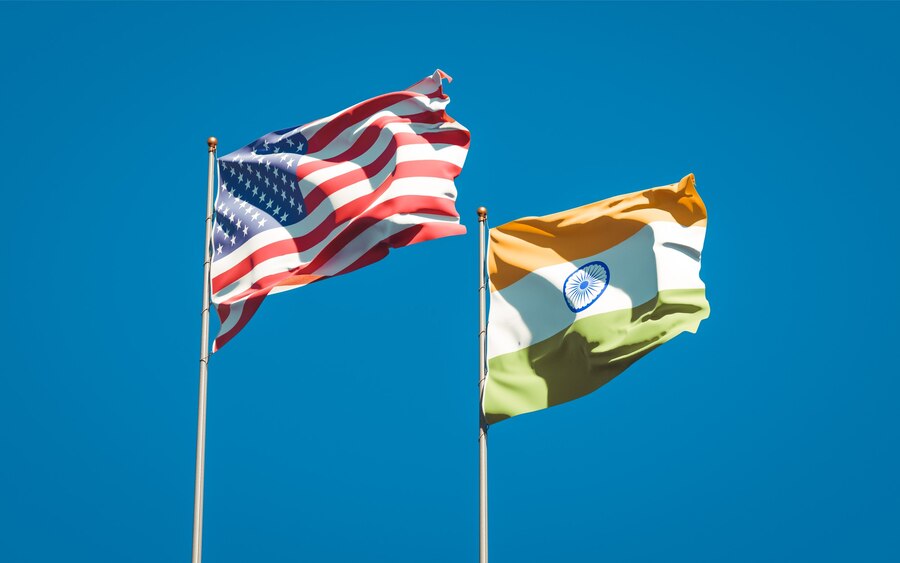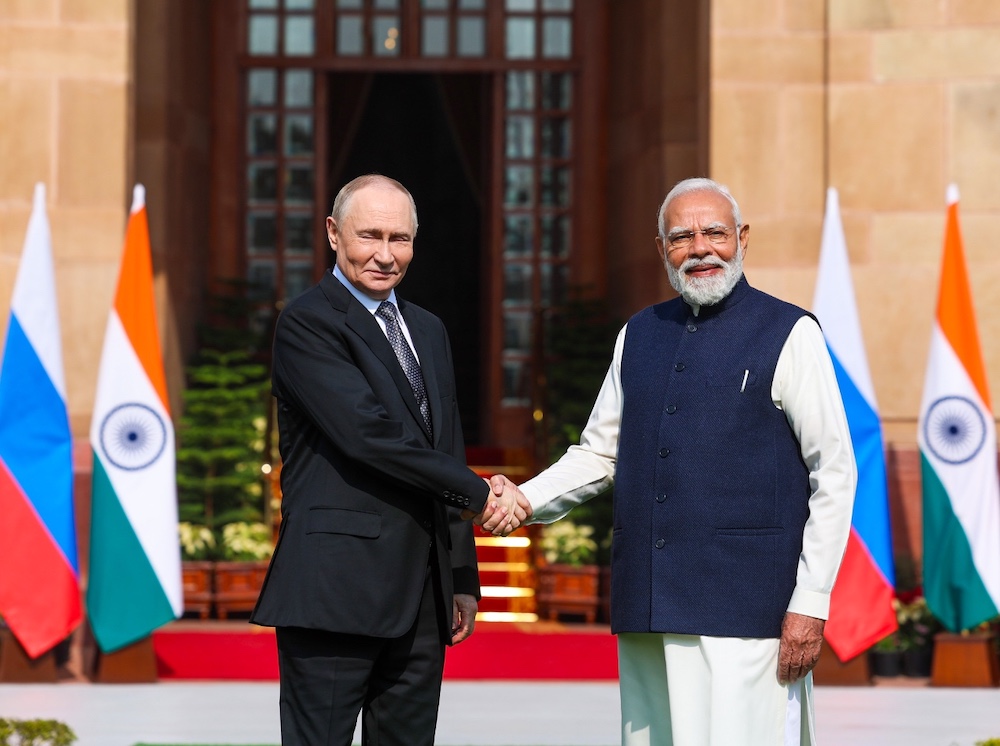
The defence secretary, Giridhar Aramane, while speaking at the second India-US defence acceleration ecosystem (INDUS-X) along with the US Indo-Pacific commander, Admiral John Aquilino, acknowledged intelligence support from the United States to counter the 2020 challenge from the northern neighbour. He said, “India is giving a face-off to our (northern) neighbour on almost all the fronts we have with them. Wherever there is a mountain pass, we are stationed there to face the eventuality. Wherever there is a road, we have to be ready there. So, that way, we are standing against a bully in a very determined fashion, and we expect our friend, the US, will be there with us in case we need support. We greatly appreciate the support and resolve from our friends in supporting us in such an event, basically the information, intelligence, and any support by way of equipment will be of great use to us.”
This statement points to the growing Indo-US convergence in the defence sector, symbolizing cooperation on the security front. It needs analysis considering how this convergence affects the national security scenario.
The Russia-Ukraine war has effectively put the world into two blocks, with the US-led North Atlantic Treaty Organization (Nato) on one side and the China-Russia-Iran troika on the other side. The world slowly seems to be inching towards the old days of the cold war era. The transition is happening and will continue unless peace is restored between Russia and Ukraine, and the Palestine issue is settled with an acceptable two-state solution. The only shift is that in the earlier cold war, Russia was the block leader, which has been replaced by China.
The Russian president, Vladimir Putin, chose China for his first visit after the electoral victory. It brings out two important facets of the Beijing-Moscow relationship. The first is that both nations are under a compulsion to cement their relationship to ward off US and western hostility spearheaded by the Nato.
The coming together of Iran in this relationship, forced by geopolitical circumstances, creates a strong troika of Beijing-Moscow-Tehran capable of upsetting US hegemony and diluting the US’s influence. The Moscow-Beijing bonhomie also has geopolitical ramifications both at the regional and global levels. With the US sanctions on Moscow and its embroilment in a long-drawn war with Ukraine, Moscow needs China.
From an Indian perspective, China’s expansionist designs pose a security threat all along the northern and north-eastern fronts. It is also a regional security threat with tentacles spread in the Indian Ocean Region (IOR) and all around in Bangladesh, Sri Lanka, Myanmar, and the Maldives. Any Russian support to Chinese expansionism would pose a serious security threat to Indian interests.
So, how could India ward off such a likely scenario? What should be the trajectory of relations between India and the US, especially regarding security cooperation?
India is going through an electoral process, and results are expected soon. It is difficult to predict whether the present political establishment will continue or if a new political establishment takes over. The trajectory of India-US relations will remain unchanged, irrespective of the government in New Delhi, at least until November 2024 when the US goes into elections. The shape of Indo-US relations after the US elections will depend upon who occupies the White House.
It is a fact that China’s unreasonable aggressiveness has led to a confrontation between both nations on the military and diplomatic fronts. The situation on the borders with the dragon is abnormal, unstable, and unpredictable, with an eyeball-to-eyeball deployment to stave off Chinese threats. The situation has remained unresolvable despite twenty-one rounds of military-level talks. At the political level too, there seems to be no activity to resolve the situation. China made attempts at land grab on the line of actual control (LAC), and India fought back, resisting Chinese attempts at gobbling territory.
In eastern Ladakh, China has unreasonably refused to withdraw from certain areas, leading to more hardening of the eyeball-to-eyeball deployment. India’s security interest is also challenged by the China-Pakistan collusion. The China-Pakistan Economic Corridor passing through Pakistan-occupied Kashmir further compounds Indian security and territorial interests, and it poses a challenge to Indian sovereign interest over the area. The China-Pakistan collaboration also raises the spectre of a two-front threat to the security of Ladakh and Jammu & Kashmir.
How to ward off this threat militarily and diplomatically?
There are two facets to the whole issue that need perusal simultaneously. The first part is to make the military strong through modernization, develop border infrastructure, and develop and enhance the defence industry’s capacity to meet military needs indigenously. The second is to exploit the US vulnerability due to the Beijing-Moscow-Tehran troika, seek, and achieve greater convergence with the US. It is a fact that the US is compelled to accept Indian strategic autonomy due to its perceived vulnerability, and it needs a partner in the region to keep China and its allies in check. Conversely, India needs US support to tackle the dragon sitting at its doorsteps with a belligerent attitude.
India’s engagement in the two-plus-two dialogue and signing agreements on security cooperation is indicative of India-US convergence. India has signed key foundational agreements with the US, including the Communications Compatibility and Security Memorandum of Agreement, the Logistics Exchange Memorandum of Agreement, the General Security of Military Information Agreement, and the Basic Exchange and Cooperation Agreement.
What does India need to do to tackle and ward off Chinese threats and show its fangs to China?
China’s defence budget is much bigger than India's defence budget, putting China far ahead of India in military capability and modernization. There is a huge gap in capabilities. India needs to increase its defence budget for the modernization of the military and infrastructure development. The gap in capabilities imposes caution upon India to move cautiously while dealing with the dragon and not tread upon Chinese sensitivities.
In addition, there is a need to build an indigenous defence industry to meet defence needs, and until the time indigenous capabilities are built, go for modernization of the military with technology transfer and simultaneously reduce dependence upon a single source. Single-source dependence creates capability gaps, putting security in peril, and thus there is a need to have multiple sources for military equipment. The total dependence on Russian equipment has led to a dilution in capabilities. It needs to be progressively reduced with multi-sourcing of defence equipment.
China possesses military strength and capability to threaten the regional and global security scenario to achieve its expansionist designs. That is the reason it flexes its muscle in the Pacific and Indian Oceans, the South and East China Seas. China's hegemonic and expansionist designs need containment. This containment can be effectively brought about by India-US convergence. India needs to address pinpricks that may harm convergence, like human rights, press freedom, and reports of the US Commission on International Religious Freedom on the treatment of religious minorities.
The US in the region needs India to ward off China’s hegemonic and expansionist designs, which pose a threat to and dilute US power potential. India needs the US to strengthen its security and keep the dragon away from its doorsteps; hence, both need each other, thus the need for US-India convergence in the defence sector.
The US may be wary of India’s continuous engagement with Moscow and Tehran; however, its geopolitical compulsions do not give it leverage to sever and dilute ties with India. Both need each other to contain China’s designs aimed at dominating the global and regional security scenario.
Disclaimer: The views expressed in the article are the author’s own and don’t necessarily reflect the views of India Sentinels.
Follow us on social media for quick updates, new photos, videos, and more.
Twitter: https://twitter.com/indiasentinels
Facebook: https://facebook.com/indiasentinels
Instagram: https://instagram.com/indiasentinels
YouTube: https://youtube.com/indiasentinels
© India Sentinels 2024-25










